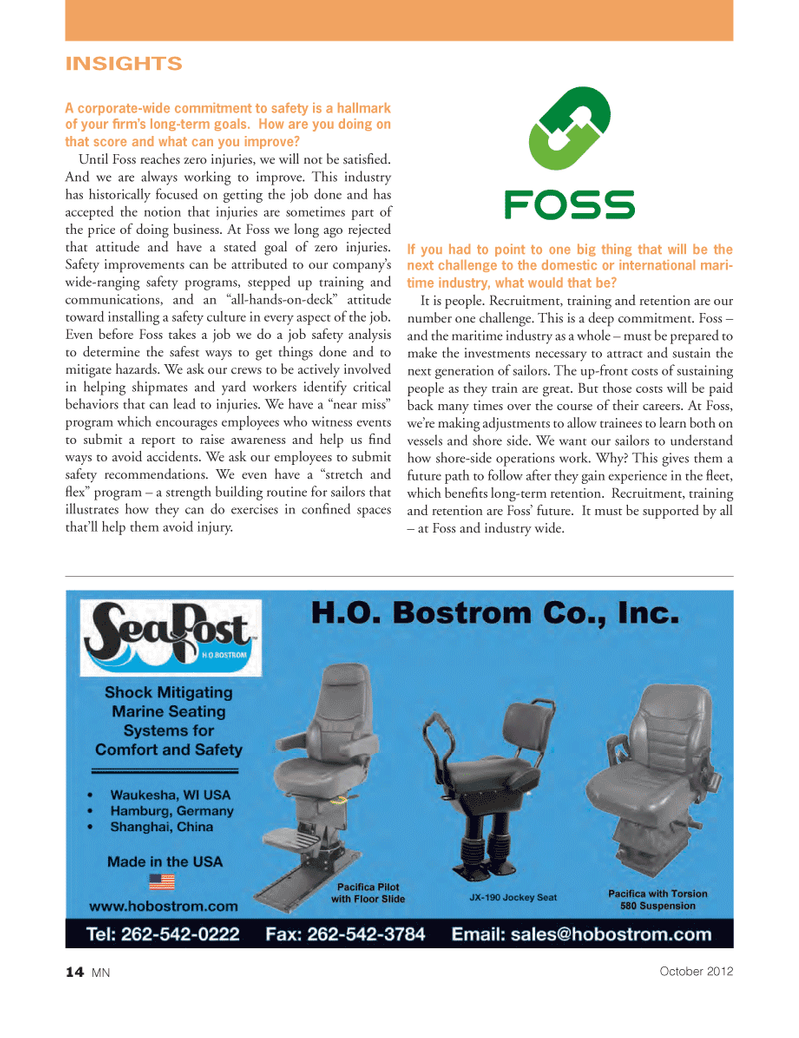
Page 14: of Marine News Magazine (October 2012)
Year in Review & Leadership
Read this page in Pdf, Flash or Html5 edition of October 2012 Marine News Magazine
INSIGHTSA corporate-wide commitment to safety is a hallmark of your Þ rmÕs long-term goals. How are you doing on that score and what can you improve? Until Foss reaches zero injuries, we will not be satisÞ ed. And we are always working to improve. This industry has historically focused on getting the job done and has accepted the notion that injuries are sometimes part of the price of doing business. At Foss we long ago rejected that attitude and have a stated goal of zero injuries. Safety improvements can be attributed to our companyÕs wide-ranging safety programs, stepped up training and communications, and an Òall-hands-on-deckÓ attitude toward installing a safety culture in every aspect of the job. Even before Foss takes a job we do a job safety analysis to determine the safest ways to get things done and to mitigate hazards. We ask our crews to be actively involved in helping shipmates and yard workers identify critical behaviors that can lead to injuries. We have a Ònear missÓ program which encourages employees who witness events to submit a report to raise awareness and help us Þ nd ways to avoid accidents. We ask our employees to submit safety recommendations. We even have a Òstretch and ß exÓ program Ð a strength building routine for sailors that illustrates how they can do exercises in conÞ ned spaces thatÕll help them avoid injury. If you had to point to one big thing that will be the next challenge to the domestic or international mari-time industry, what would that be? It is people. Recruitment, training and retention are our number one challenge. This is a deep commitment. Foss Ð and the maritime industry as a whole Ð must be prepared to make the investments necessary to attract and sustain the next generation of sailors. The up-front costs of sustaining people as they train are great. But those costs will be paid back many times over the course of their careers. At Foss, weÕre making adjustments to allow trainees to learn both on vessels and shore side. We want our sailors to understand how shore-side operations work. Why? This gives them a future path to follow after they gain experience in the ß eet, which beneÞ ts long-term retention. Recruitment, training and retention are FossÕ future. It must be supported by all Ð at Foss and industry wide. 14 MNOctober 2012MNOct2012 Layout 1-17.indd 14MNOct2012 Layout 1-17.indd 1410/2/2012 9:32:30 AM10/2/2012 9:32:30 AM

 13
13

 15
15
